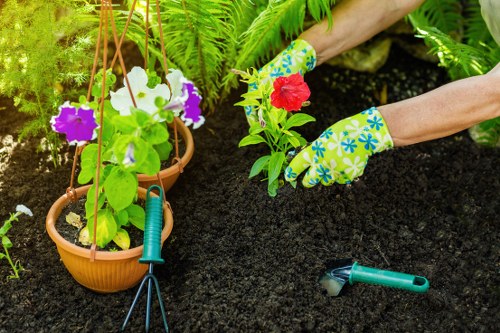Comprehensive Guide to Hedge Trimming in Elephant and Castle

Maintaining well-trimmed hedges is essential for both aesthetic appeal and the health of your garden in Elephant and Castle. Whether you're a seasoned gardener or a beginner, understanding the best practices for hedge trimming can transform your outdoor space.
Hedge trimming not only enhances the visual appeal of your property but also ensures that your plants remain healthy and vigorous. In Elephant and Castle, where urban gardening is becoming increasingly popular, knowing how to properly trim hedges is a valuable skill.
There are various types of hedges, each requiring specific trimming techniques. From evergreen to deciduous hedges, selecting the right method can make a significant difference in the growth and appearance of your plants.

Benefits of Regular Hedge Trimming
Regular hedge trimming offers numerous benefits that go beyond mere aesthetics. It promotes healthy growth by removing dead or diseased branches, allowing sunlight and air to reach the inner parts of the hedge.
In Elephant and Castle, where space is often limited, a well-maintained hedge can serve multiple purposes, such as creating privacy, acting as a windbreak, and adding structure to your garden.
Moreover, frequent trimming helps in shaping the hedge, ensuring it grows in the desired form. This is particularly important for formal gardens where symmetry and precision are key.

Tools and Equipment Needed for Hedge Trimming
Having the right tools is crucial for effective hedge trimming. Essential equipment includes hedge shears, loppers, and a sturdy pair of gloves. For larger hedges, electric or gas-powered trimmers may be necessary.
In Elephant and Castle, where gardens can vary in size, selecting the appropriate trimming tools can make the task easier and more efficient. Investing in quality equipment ensures that your hedges are trimmed properly without causing damage to the plants.
Safety should always be a priority. Ensure that all tools are in good condition and that you're wearing protective gear to prevent accidents while trimming.

Step-by-Step Hedge Trimming Process
Trimming hedges involves several steps to ensure the best results. Begin by assessing the overall shape and size you desire for your hedge. Use hedge shears to make precise cuts, starting from the bottom and working your way up.
It's important to maintain a consistent height and thickness throughout the hedge. Regularly step back to evaluate the shape and make adjustments as needed.
After the initial trimming, remove any stray branches and clean up the surrounding area to prevent the spread of disease.

Common Mistakes to Avoid
One of the most common mistakes in hedge trimming is cutting too much at once, which can stress the plant. It's better to trim a little each year to maintain the desired shape without harming the hedge.
Another mistake is neglecting to prune regularly. In Elephant and Castle, where environmental factors can affect plant growth, regular trimming is essential to keep hedges healthy and well-shaped.
Avoid using dull tools, as they can cause ragged cuts that make the plants more susceptible to disease. Always ensure your trimming tools are sharp and well-maintained.
Choosing the Right Hedges for Elephant and Castle
Selecting the appropriate type of hedge is crucial for the success of your garden in Elephant and Castle. Consider factors such as climate, soil type, and the level of maintenance required when choosing your hedges.
Some popular hedge options include boxwood, privet, and yew, each offering unique benefits and aesthetic qualities. Researching the best varieties for your specific conditions will ensure a thriving and attractive hedge.
Additionally, consider the growth rate and ultimate size of the hedge to ensure it fits well within your garden space.
